Ithaca College held a processing session Nov. 30 for BIPOC students to ask questions and share their concerns with college administrators and staff members about the departure of Angélica Carrington, former director of the BIPOC Unity Center.
Carrington was no longer employed at the college as of Nov. 9. During the session, the college shared human resources background information that may be relevant to Carrington’s departure, information about interim plans for the BIPOC Unity Center and plans for the search for the center’s next director. About 20 students attended the session.
There were six administrators and college staff members that facilitated the processing session: Luca Maurer, executive director for student equity, inclusion and belonging; Marsha Dawson, dean of students in the Office of Student Affairs and Campus Life; Cliff-Simon Vital, assistant director of the BIPOC Unity Center; Bonnie Prunty, vice president for student affairs and campus life; Stephanie Nevels, a mental health counselor at the Center for Counseling and Psychological Services; and Kimberly Lieb, business partner in the Office of Human Resources.
Nevels and Vital facilitated a listening session with students Nov. 16 before Thanksgiving break started on Nov. 18. The Ithacan asked to report on the session, but Vital asked reporters not to attend because it was meant to be a safe space for students to share their feelings.
At the start of the processing session, Nevels said she and Vital shared notes from the listening session with Prunty and Maurer. Nevels said they decided to hold another conversation because she and Vital could not answer all of students’ questions.
“Rather than processing emotions, this time is really about them sharing as much information as they are legally able to share about how we got to where we are, addressing some of the feelings that you’ve expressed in the last meeting, and then talking about what’s going on with how to move forward,” Nevels said.
Prunty said via email that the Office of Student Affairs and Campus Life leadership sent direct email invitations to the processing session to students who have recently participated in the BIPOC Unity Center’s activities.
“We wanted to keep the discussion to a reasonable size to be able to have a conversation and we wanted to include the students who have most recently engaged with the Center and were most directly impacted by the recent departure of the Director,” Prunty said via email. “We specifically wanted to engage with students who worked in the office, had attended programs or engaged with the BIPOC Unity Center this fall or students who serve as officers of the student organizations that are part of the Students of Color Coalition.”
College Communication
Senior Ashanti Ford, a peer educator for the BIPOC Unity Center, said in an interview with The Ithacan that the college officially shared the news of Carrington’s departure with student staff members of the BIPOC Unity Center during the center’s weekly staff meeting Nov. 10.
The college did not make an official statement regarding Carrington’s departure from her role as the director of the BIPOC Unity Center until Prunty announced her departure in an Intercom post Dec. 1.
Maurer started the Nov. 30 session by recognizing that several students had already shared concerns about how they learned of Carrington’s departure with him and the gathered staff members and administrators.
“First, I wanted to offer my most sincere apology for the way that that happened,” Maurer said. “We did not anticipate that news [of Carrington’s departure] would spread the way it did and so quickly, and I think we had thought through a lot of ways to support everyone through this process, and that was something I had not anticipated. And so while it was not our intention, I know that it had a huge impact.”
During the session, several BIPOC students expressed frustration with the lack of communication from administration on Carrington’s departure. Students shared that they learned of Carrington’s departure through emails and text messages from Carrington and other students who had already heard the news.
Sophomore Noeline Luyindula said she did not receive any communication from the college about Carrington’s departure prior to the Intercom post, despite her involvement with multiple BIPOC organizations and close relationship with Carrington. Luyindula said she found out about Carrington’s departure from a group text message with other students.
“When I first found out, I was so sad, and it was so random,” Luyindula said. “I felt like it wasn’t right for me to find out that way.”
Ford said she learned of Carrington’s departure Nov. 9 after Carrington texted her and said she was no longer employed at the college.
“It felt like my world was crashing down when I heard,” Ford said. “[It felt] like we lost someone, but that person is still alive. And [student staff] were … calling each other like, ‘Oh my God, how are you feeling?’ It was such a blow to the student staff in the office because no matter what, even though she was our boss, she was also like a mother to us.”
Maurer and Prunty both said they tried to be very thoughtful about how they communicated about Carrington’s departure with students. They said they planned to have a meeting with student employees to tell them about Carrington’s departure the day after she left the college.
“We knew the cadence that we were going to try to work with to push information out, but the information got out way faster than anything that we had anticipated,” Prunty said. “We absolutely owe you an apology because you did not find out in the way that we would have liked you to find out, and we have a responsibility for not having anticipated that that might have happened and planned differently.”
Carrington said via Facebook Messenger that people found out about her departure soon after she left.
“I had many meetings with staff [and students] that afternoon right after I met with Luca/Bonnie so folks realized immediately,” Carrington said. “In my meeting they didn’t ask if I had additional meetings that day to follow up or who I was ‘close to.’ They changed my email signature immediately which I receive 200+ of emails a day so without outreach folks found out that way as well. Alumni contacted me via LinkedIn confused since we were just communicating about future plans.”
Sophomore Mureen Doherty said the college should have sent a mass email to students to ensure that everyone knew of Carrington’s departure, not just those who worked at the BIPOC Unity Center. She asked if the college considered how their decisions and lack of communication would impact the BIPOC community at the college.
“You did not understand how small the community was and how fast [news of Carrington’s departure] would get out,” Doherty said. “Do you take into account and consideration cultural ramifications of who you are firing, how that culture works and how it impacts the entirety of campus? And if you cannot relate to the culture, do you bring in someone to help you understand?”
Prunty said she agreed that an email could have been an alternative option to the conversation with BIPOC Unity Center staff members.
“We were trying to do something more personal and we were gonna have a direct conversation with people who are closest,” Prunty said. “I think that there are a number of people who don’t feel particularly good about getting an email and not having the opportunity, if they worked really closely with somebody, to ask some questions or have the courtesy of hearing that from the person who was their supervisor or team lead.”
Junior Tatyana Rubio said she was frustrated that the college staff and administrators were giving contradictory information about Carrington’s departure during the session.
“You claimed that this was a very well-thought-out process, but then when it comes to things as communicating with us, that wasn’t so very well thought out within this process,” Rubio said. “So how sincere can you really be with your apologies? We still haven’t even gotten any communication that she’s been fired. There’s probably people on this campus who still have no idea that there’s no director of the [BIPOC] Unity Center.”
Dawson said that when employees leave the college, the communication from the college depends on the way that they leave.
“Typically in the spaces where someone gives their two weeks or they’re going to retire, we have enough time and they control the communication and connect something out to the community,” Dawson said. “When there’s an HR personnel issue, very rarely can we put something out to the community. So that was also why it stung even more because we didn’t honor this person the way that you all feel like she should have been honored.”
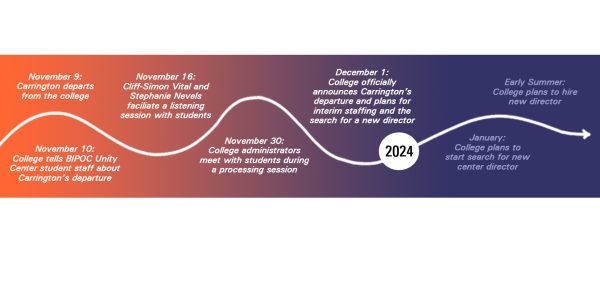
Human Resources Context of Carrington’s Departure
Dawson said the college could not provide details about Carrington’s employment or departure because it was human resources information that legally could not be shared. Prunty said Lieb was present at the session to provide general context about human resources processes that may relate to Carrington.
Lieb said employees complete a performance review process toward the end of each academic year. Employees evaluate themselves; and supervisors, colleagues and associated student employees fill out an evaluation for an employee. During the performance review process or throughout other points in the year, they may identify a gap in performance which partners from the Office of Human Resources may try to address with a plan or formal performance improvement plan.
“There’s always an expectation set of what the performance needs to look like, and resources are given to the employee to make sure that they have everything that they need to be successful,” Lieb said. “Sometimes, in this process of performance, the gap isn’t closed and so a decision might need to be made to have the most amount of separation from employment.”
Senior Liguori Flanagan said performance reviews may not show the full extent of an individual’s contributions to the college, especially in Carrington’s case.
“There might just be students that feel like their voices are the voices that would have been the bend or the break on one issue with whether this director is doing a good job or not,” Flanagan said. “The job that maybe is not seen in the performance gap as important but, as far as what they’re doing to other students and how they’re treating other students is way more important as far as our community itself.”
Flanagan asked if students are given the opportunity to provide input as employees try to make changes for the performance improvement plan.
Lieb said it depends on what the performance gap is.
“If the performance gap is something that you as a student wouldn’t necessarily know, see or experience, no, we wouldn’t ask for your feedback,” Lieb said. “But if it’s something that you would, then of course, we would ask for your feedback.”
Lieb said department leadership can ask students to provide feedback about employees. Dawson said students sometimes also approach department leadership or campus leadership to share their experiences. Multiple students said they were not asked to provide feedback about Carrington and asked if the college received input about Carrington from student employees of the BIPOC Unity Center.
“There were many ways that students did approach with information,” Lieb said.
Prunty then said she felt that the college staff members were starting to share too much information and could not provide more details.
Students prompted college staff with more questions about including student employees of the BIPOC Unity Center in the performance review process before Dawson paused their questions.
“We’re trying to answer as much as we can,” Dawson said. “We want to respect that person’s not in the room. I don’t want to tell their business completely either. So we’re trying to get an overview of the process. But if there’s specific things we can answer, we will, but we can’t say, ‘For Angélica, we did this or did not do this.’”
The college officials said they could not share if Carrington was on a performance improvement plan. Carrington declined to publicly comment on performance evaluations during her time at the college.
Moving forward
At the processing session, Prunty said Dawson will serve as the interim director of the BIPOC Unity Center. Dawson will continue to serve as dean of students, but Prunty will take on some of her responsibilities so that she can work with the BIPOC Unity Center.
Dawson said she wants to provide as much support as she can for students as she serves as the interim director of the BIPOC Unity Center.
“At this time, it’s just really important to listen to the students and navigate in a way that they need to, to feel seen, heard and valued, so that is the priority right now,” Dawson said. “Then really start next semester fresh with some intentional programming after we get feedback and input from the students.”
Carrington said via Facebook Messenger that she trusts Dawson to lead the BIPOC Unity Center because Dawson supported and mentored her while she worked at the college.
“I respect Marsha so much … and know that although this is a big addition to her already full plate, she genuinely cares about the community and will navigate in an intentional way,” Carrington said.
Prunty said Shadayvia Wallace, program director for the First Generation Center and the MLK Scholars Program, will also take on additional responsibilities. Wallace will lead the search for a new administrative assistant/program coordinator for the BIPOC Unity Center and work as the chair of the planning committee for the MLK Campus-Wide Celebration. Dawson’s position as dean of students makes her a Title IX mandated reporter, so Wallace will act as the BIPOC Unity Center’s Title IX confidential reporter.
Sophomore Duda Formosa, a peer educator at the BIPOC Unity Center, said in an interview with The Ithacan that she is concerned about supporting the BIPOC community and continuing the momentum that the office has built through new events, initiatives and goals without a permanent director.
“It’s a lot of weight on us to keep the office working,” Formosa said. “I know how it is to be a POC [person of color] in this school and how much support we as the office give to students and how important the office is. … I want to keep inviting the POC students in the POC community, but at the same time … I’m tired as well. I’m kind of not motivated to do it. Because the person that was supporting us the most is not here anymore.”
Prunty said the college will begin a national search for a new director of the BIPOC Unity Center in the beginning of Spring 2024 and hopes to find a new director by early summer so that they can be ready to lead the center in August.
“We’ll launch the search early in spring semester,” Prunty said. “The reason why we want to do that timeframe is because we want to make sure that students can be very actively involved in the search process.”
Prunty said the college will look for students to serve on the search committee for a new director of the BIPOC Unity Center. Prunty said that typically, two students serve on search committees, but she would be open to discussing more students. Several students suggested that it would be better to have four or five students serve on the search committee to fully represent BIPOC students’ perspectives.
Flanagan said several past professional staff members of the BIPOC Unity Center, formerly known as the Center for Inclusion, Diversity, Equity and Social Change, have resigned or found better job opportunities within the last few years. He said he hopes that the college finds an individual who is committed to staying at the college to fill Carrington’s position.
“Do you guys have any intentions to … put in incentives so they stay long … [and] to make it so individuals don’t just stay here until they find a reason to resign?” Flanagan said.
Prunty said the college has not discussed that point yet, but it can consider adding financial incentives, like a gradual increase in compensation for each year that an employee stays in their role.
The BIPOC Unity Center started Fall 2023 with three professional staff members, as Radeana Hastings, former program coordinator of the BIPOC Unity Center, and Vital joined the college — which marked the first time since May 2022 that it was fully staffed. Geselle Dominguez ’18, former program coordinator for the Center for IDEAS, departed the college in May 2022. Omega Hollies, former associate director of the Center for IDEAS, left the college at the end of October 2022.
As The Ithacan previously reported, Hastings left the college as of Nov. 10.
Sophomore Leticia Rebelo de Oliveira, a peer educator at the BIPOC Unity Center, said in an interview with The Ithacan that student staff members were excited to increase the center’s outreach with a full professional staff at the start of Fall 2023.
“We were finally happy we had a complete team and worked together and offered more support for the students, and then [Carrington is] gone,” Rebelo de Oliveira said. “We’re trying to regain trust for the BIPOC community on campus now and find solutions to keep going.”
Doherty said in an interview with The Ithacan that she understands how the administration handled Carrington’s departure, but she also recognizes how it affected BIPOC students.
“I’ve had personal conversations with Bonnie and Marcia and Cliff,” Doherty said. “Like, I fully understand, you guys did try. There was a huge effort. … I don’t want them to get as much flack as they are, but I do also understand how people of color are coming from a place of raw emotion.”
Staff Writer Jacquelyn Reaves contributed reporting.


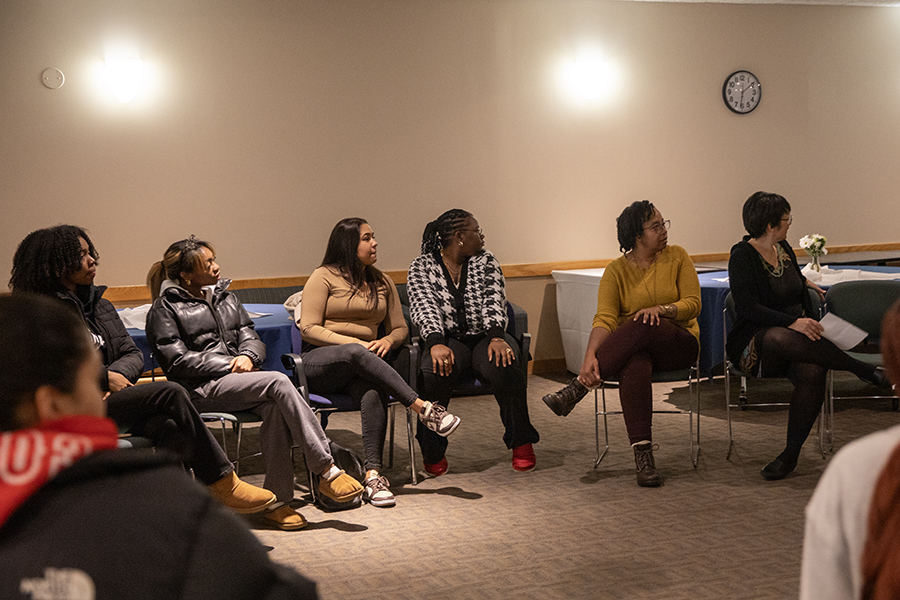







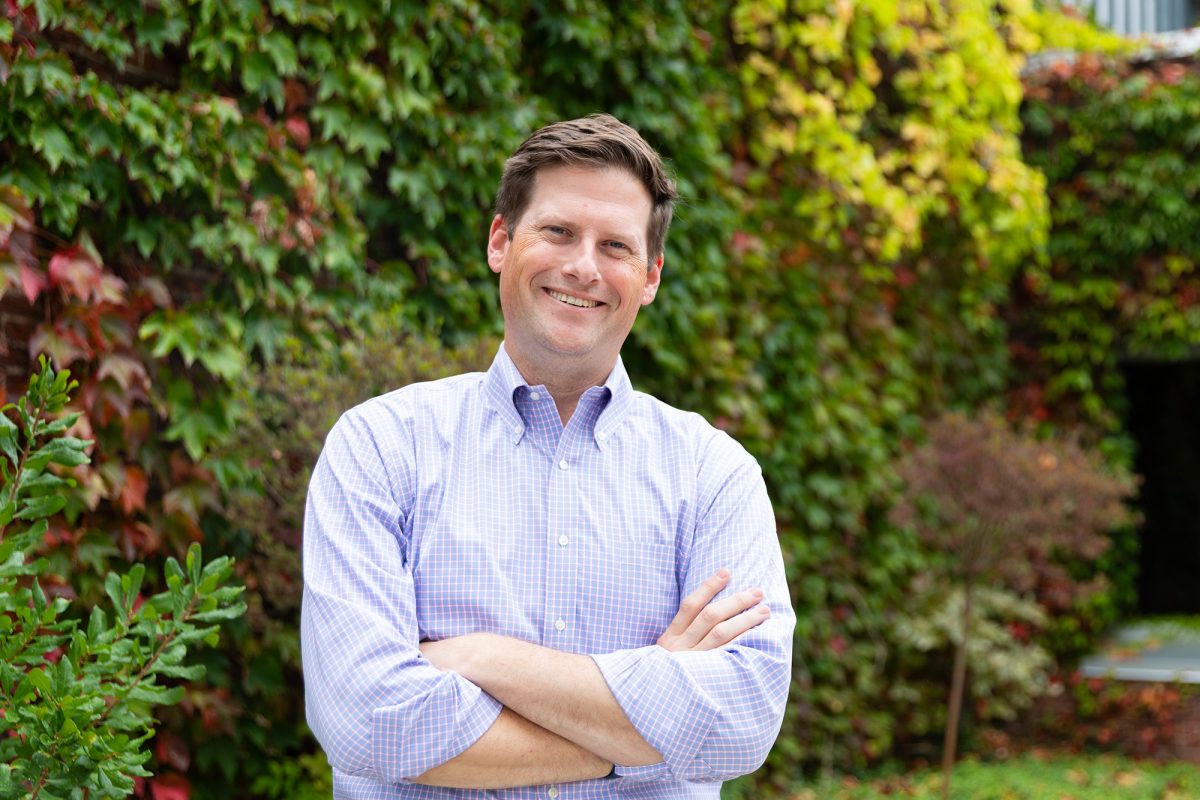




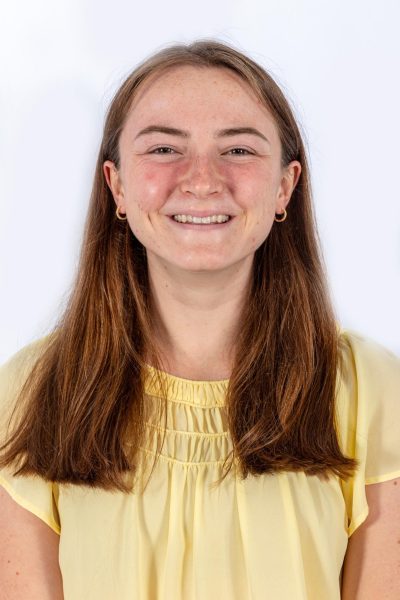
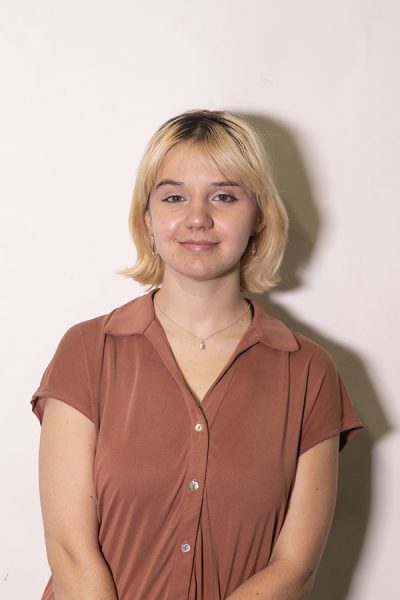
Tanya Hutchins • Dec 8, 2023 at 5:46 pm
Until high turnover stops, it will be hard to retain BIPOC staff and faculty. I really hope the college considers a retention program that includes mentoring and leaderships skills.
Once a relationship begins to flourish and it’s abruptly ended, we, as alumni and students, have to start all over again, explaining the history of the culture at the college and past challenges.
If you don’t learn from your mistakes, history repeats itself. I am beyond frustrated and so tired of this.
Tanya H., Class of 1989